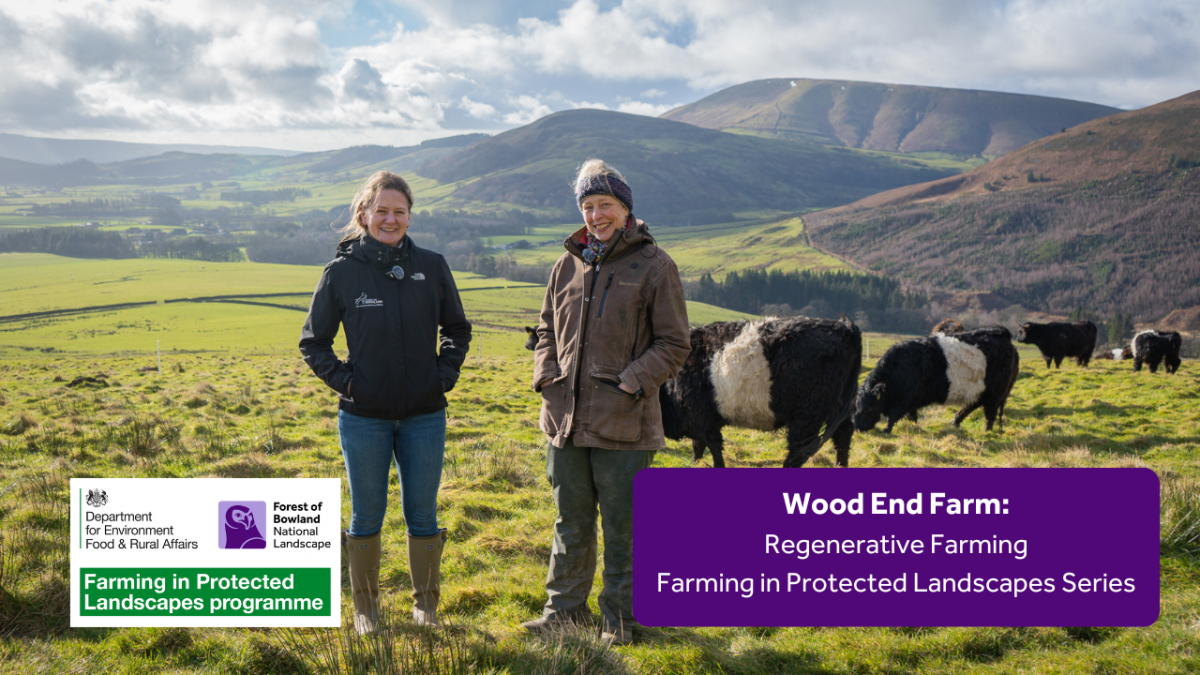The Forest of Bowland National Landscape is supporting Regenerative Farming and one way we have been doing this is through the Farming in Protected Landscapes (FiPL) programme.
 We have put together a short series of filmed case studies to show how the Defra funding has supported farmers in starting or progressing their transition to more regenerative farming practices in the Forest of Bowland National Landscape. These films can be found here on our YouTube page:
We have put together a short series of filmed case studies to show how the Defra funding has supported farmers in starting or progressing their transition to more regenerative farming practices in the Forest of Bowland National Landscape. These films can be found here on our YouTube page:
What is Regenerative Farming:
Regenerative farming aims to:
- Improve and restore soil health
- Increase biodiversity
- Improve resilience to climate change
- Improve water quality
- Strengthen whole farm ecosystems
This is done by following 5 principles:
- Minimise soil disturbance
- Keep soil covered
- Maintain living roots in the soil
- Maximise plant diversity
- Use a mixed farming system
Interestingly there is no set definition for 'Regenerative Agriculture' because it is very dependable on the context of each farm and farming business. Meaning the suitable practices and results will vary from one farm to the next, in simple terms no one right answer fits all!
How is Regenerative Farming achieved:
Guided by the regenerative farming aims and principles mentioned above, it looks at a whole farming system approach to achieve these. But essentially it is based around:
- Using rotational grazing to establish longer resting periods between grazing. By dividing up larger fields into much smaller paddocks which are grazed with high numbers of animals for very short periods of time – usually around one day before the animals are moved into the next paddock. The phrase that is quite often referred to is 'graze a third – trample a third – leave a third'.
- Using the longer resting periods will encourage a more diverse sward to establish (lots of different species including grasses, flowers and herbs). The benefits of having a multispecies sward include:
- Some species will be really deep rooting, these deep roots help to breakup any soil compaction; tap into the nutrients which are found deeper down in the soil and, during periods of extreme dry weather, find the water stored lower down in the soil too.
- Different species provide different benefits to the animals, for example Chicory is anthelmintic which means it helps to reduce the worm burden in livestock which means the farmer can reduce their wormer use. This also has a positive impact on soil health as wormers can be quite detrimental to the soil's living organisms.
- Establishing flowers and herbs within the grass sward and allowing enough time for them to flower, through the longer resting periods, will also provide a food source for many insects, invertebrates and small mammals, supporting and increasing biodiversity.
- Establishing taller swards with multi species also helps to protect the soil during extreme weather events, such as drought and heavy rainfall.
- This chart from Cotswolds Grass Seeds shows the cross section above and below ground, a bit like an iceberg, there is so much that goes on below the ground when multispecies are introduced and why we need to look after and protect our soils:
- Reducing the reliance and need for artificial fertilisers and instead building up the soil's natural nutrient recycling system. Through building up the soils own Mycorrhizal fungi, this creates a symbiotic relationship between the plants root system and all the bacteria, nutrients and fungi within the soil. When this relationship is up and running, the plants no longer are reliant on the artificial fertiliser. This helps to:
- Reduce costs on artificial fertilisers and inputs, diesel, labour etc.
- Reduce compaction in the soil as less passes over the fields with machinery through the applications of artificial fertilisers
- Increase carbon sequestration, when the plant is having to work harder through the mycorrhizal fungi as opposed to being given it through the application of artificial fertilisers like Nitrogen, the plant will be photosynthesising more and therefore putting more carbon into the soil.
And the best bit about it, as a result of all of the above, it produces high quality, nutrient rich, tasty produce that has been raised whilst also supporting nature recovery and climate mitigation.

Pasture for Life:
As you will hear in all three of the videos in the Regenerative Farming series, each of the farmers mention the support and engagement with Pasture for Life and the FiPL funded 'Pasture and Profit' Mentor and Mentee programme. To find out more about this head over to their website here; https://www.pastureforlife.org/webinars/pastureandprofit/pastureandprofit-north/
Does Regenerative Agriculture have a positive impact on the climate emergency?
Working with two other National Landscapes and two National Parks in North Yorkshire, we recently commissioned some research to investigate if upland regenerative farming could help fight the climate emergency by reducing greenhouse gas emissions. The Report below shows how this research was carried out and what the results are.
In a nutshell, they found that yes, by reducing the use of agro chemicals and other inputs such as feedstuffs, power and petrol, the emissions from regenerative farming could be up to 48% lower in the Forest of Bowland if every farm transitioned to regenerative methods.
Of course this is a difficult transition to make and not all farmers can or will do so. However, where we can encourage and support the change we will do, especially through our Farming in Protected Landscapes programme.

